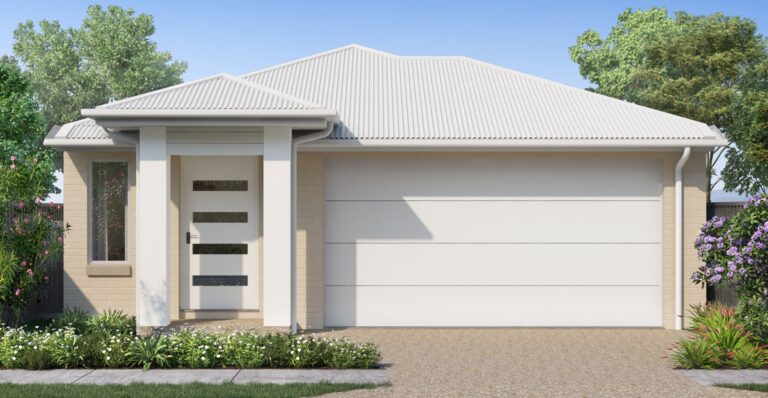
Within property investment circles, a question that gets frequently raised is “can I use my super to buy an investment property?” While it may not be quite as simple as withdrawing super and moving in, there are a few ways that super can be used to get you into the investment property game.
Self-Managed Super Fund (SMSF) property investment
The primary process of buying investment property with super is through a self-managed super fund.
What is a SMSF?
A SMSF is built on a trust structure, whereby the members of the trust can decide how the super is invested. The use of the word ‘invested’ is an important one, as this outlines that the property must be purchased for investment purposes only, not as an owner-occupier.
How do I switch to an SMSF?
To set up an SMSF, there are several steps to complete before you can start using super to buy investment property. It is strongly advised to seek out professional advice before starting this process.
Our friends at Alto Accounting & Advisory have provided a few tips on how to get started:
- Have members complete a form to establish the trust, deed and other documents
- Set up a bank account in name of the SMSF
- Register with the ATO
- Create an investment strategy
- Migrate existing super
- Redirect employer contributions
SMSF property investment options
Once you’re set up, it’s important to understand the pros and cons of different SMSF property investment options:
- Outright (SMSF) – the simplest option
- Unit Trust (SMSF + other investor) – ideal for business partners
- Super borrowing (SMSF + bank) – complex structure but with great benefits
SMSF pros and cons
The table* below explores the pros and cons of each option:
| Outright | Unit Trust | Super Borrowing | |
| Funding | SMSF only | SMSF + other investor | SFSF + bank |
| Pros | – Simple structure – The SMSF solely owns the investment property – Receive 100% of all future income and gains – Ability to renovate, subdivide or change zoning |
– Multiple investors widens purchase scope – Reduces capital required from SMSF – Ability to renovate & subdivide |
– The SMSF solely owns the investment property – Receive 100% of all future income and gains once loan is repaid – Reduces capital required from a SMSF – Additional funding widens purchase scope |
| Cons | – Limited to the monies available within the SMSF – Possible illiquid asset |
Very specific rules such as the unit trust cannot: – Have any borrowings – Invest in other entities – Lend money – Have dealings with a related party |
– Complex and time consuming – Limited loan providers – May only acquire a single asset – Unable to renovate, subdivide or change zoning |
While the Outright option may look the easiest, it may not be the best option for you. Make sure to seek out advice from a financial advisor or expert to discuss your options.
First Home Super Saver Scheme (FHSS) Property Investment
Another common way of buying investment property with super is to utilise the First Home Super Saver scheme.
What is the FHSS scheme?
The First Home Super Saver scheme allows you to save for your first house within your super fund, then withdraw those savings for a deposit to buy, or to build a home.
How to use the FHSS scheme to buy property
There are a few important things to note about using the FHSS scheme to buy property. First thing to consider is that you can only withdraw voluntary contribution funds, not funds contributed by your employer. An individual can contribute up to $15,000 per financial year of voluntary funds to go towards the FHSS scheme.
The second is eligibility. As the name suggests, this scheme is only available to first home owners. You must also meet the following criteria;
- Be over 18
- Have not have owned property or land in Australia
- Have not already tried to use this scheme to buy property
- Be currently house hunting or looking to build in the next 12 months
- Planning to live at the property for at least 6 of the first 12 months of ownership
The last consideration is timing the release of your funds. To access your FSHSS scheme, you want to be nearing a purchase decision, rather than just browsing. The process involves first applying to have a FHSS determination from the ATO. This will determine the maximum amount you can have released, after which you can apply for release of the funds.
FHSS pros and cons
With the above criteria in mind, there are a few obvious pros and cons for using the FHSS scheme to buy a property.
FHSS pros
- The key benefit of the FHSS for most is the tax benefits, as any contribution to the scheme is no longer classed as income, therefore reducing your taxable income for the year.
- Many others also make contributions via salary-sacrifice arrangement, meaning the money goes to your super account before hitting your bank account. This can be considered a benefit for those who find it difficult to consistently save.
FHSS cons
- The premise of this scheme is that you’re only able to access voluntary contributions, not your employer contributions. While this is a safety net to ensure you’re still covered when you retire, this is what sets the FHSS scheme apart from a SMSF.
- Another current con is that there is a withdrawal cap of $30,000 under the scheme. However as of July 1st 2022, this cap is set to increase to $50,000.
- Another downside is you must live at the property for at least 6 of the first 12 months of ownership, which doesn’t allow rental income from the outset. If your property purchase goal is investment/ immediate rental income, then there is the option to rent out additional rooms while you live there, or rent the property out after occupying for the 6 month period.
SMSF or FHSS scheme to buy investment property?
Both the SMSF and FHSS have their unique pros and cons, however the decision to choose one or the other to buy an investment property relies very heavily on your own personal circumstances. We highly recommend talking to your financial advisor or a financial expert to find the right option for you.
We’d love to connect
Always speak to your qualified financial advisor for tailored advice for you.



